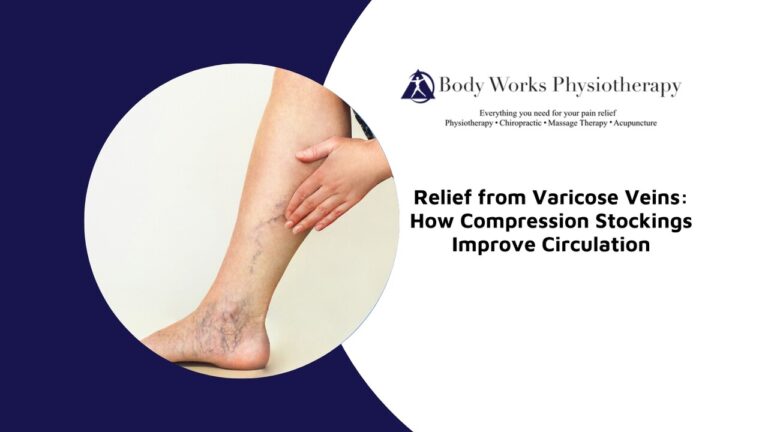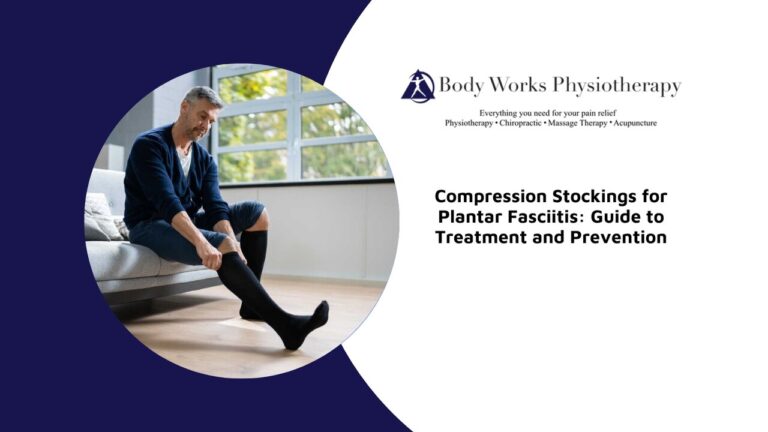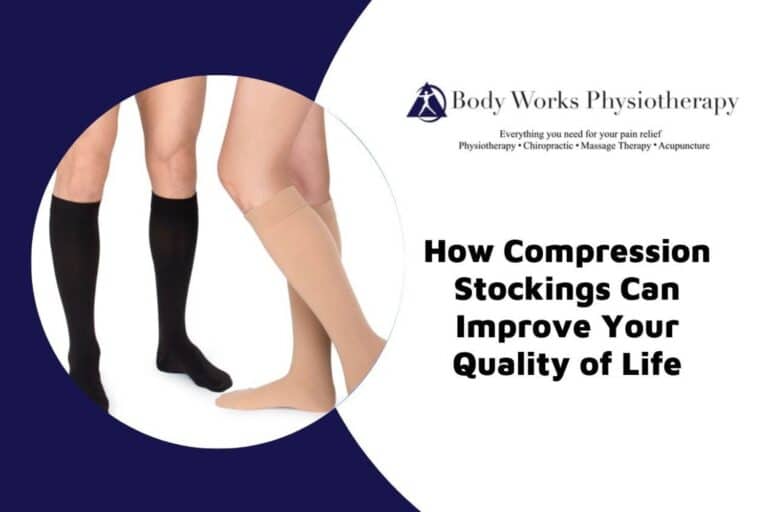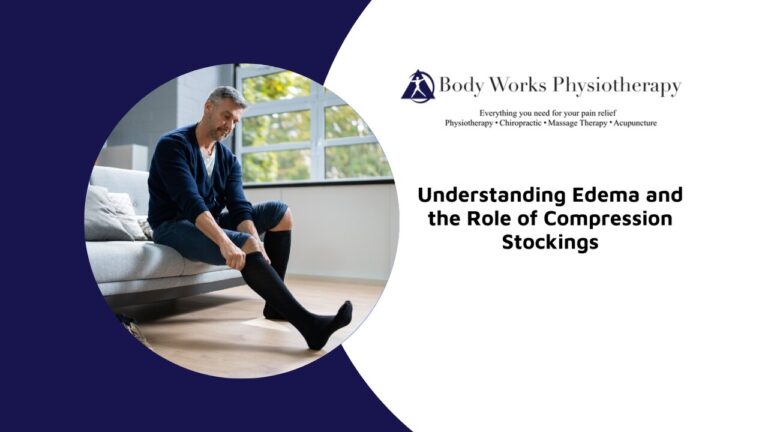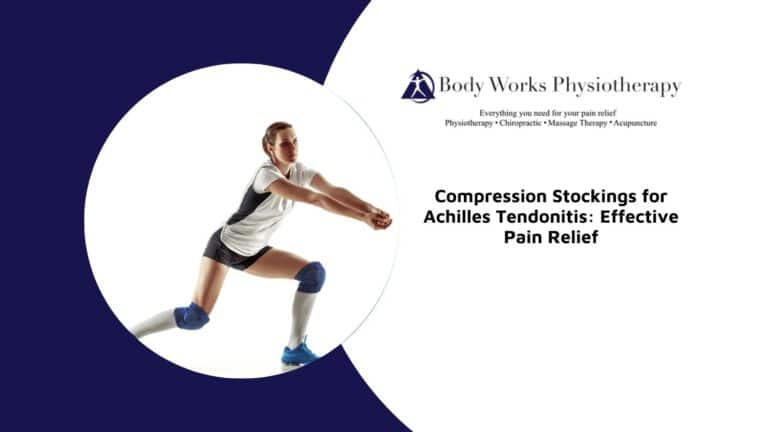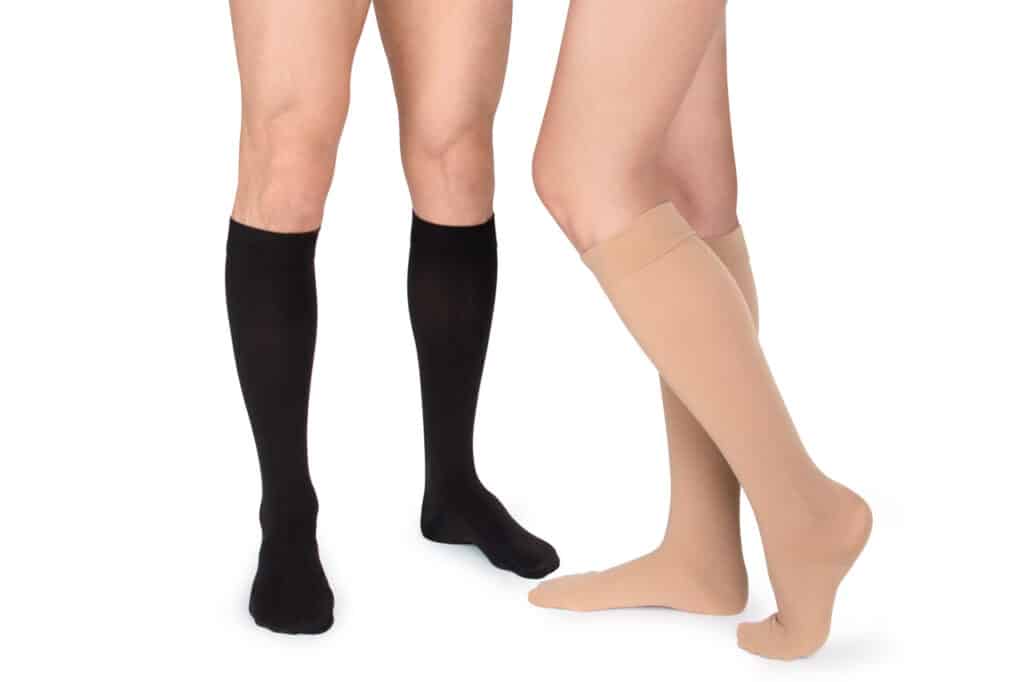
Shin splints are a common problem among athletes, especially runners and those engaged in high-impact sports. This painful condition, characterized by tenderness and soreness along the shinbone, can significantly hinder physical performance. One effective and non-invasive way to manage and prevent shin splints is through the use of compression stockings. In this blog, we will explore how compression stockings can be an essential part of your strategy to overcome shin splints.
Shin Splints Explained
Shin splints, medically known as medial tibial stress syndrome, are a common issue for athletes and individuals who engage in repetitive physical activities, particularly those involving running or jumping. The condition is primarily caused by excessive stress on the shinbone (tibia) and the connective tissues that attach muscles to this bone. This stress can lead to inflammation and microtears in the muscle and bone tissue, resulting in pain and tenderness along the inner edge of the shinbone.
Several factors contribute to the development of shin splints. Overuse is a leading cause, especially in athletes who suddenly increase the intensity or duration of their training. Poor biomechanics, such as flat feet or improper running form, can also play a significant role, as they place additional strain on the lower legs. Additionally, wearing unsupportive footwear or running on hard surfaces can exacerbate the problem by failing to absorb the shock that is transmitted to the legs with each step.
The Role of Compression Stockings in Alleviating Shin Splints
Compression stockings are designed to improve blood flow and reduce muscle vibration, which are key factors in alleviating shin splints.
- Reduced Muscle Strain: By applying gentle pressure to the lower leg, calf, and ankle, these stockings help stabilize the muscles, reducing the strain that leads to shin splints.
- Reduced Inflammation: The improved circulation also helps reduce inflammation and speeds up recovery, making compression stockings an effective tool for runners and athletes dealing with shin splints.
- Prevention of Re-Injury: Compression stockings can play a significant role in preventing the recurrence of shin splints. By providing consistent calf compression, these stockings support the muscles and tendons in the lower leg, reducing the risk of overuse injuries.
- Enhanced Recovery: The enhanced blood flow also helps in quicker recovery post-exercise, minimizing the chances of shin splints returning, especially for runners and those involved in high-impact sports.
Features to Look For When Choosing Compression Stockings
When choosing compression stockings for shin splints, consider these key features:
- Breathable Fabric: Look for stockings made from moisture-wicking and breathable materials to keep your skin dry and comfortable.
- Graduated Compression: Ensure the stockings offer graduated compression to enhance blood flow from the ankle to the calf.
- Snug Fit: A proper fit is crucial, so choose a size that provides firm support without being too tight.
- Durability: Opt for high-quality, durable materials that can withstand frequent use without losing elasticity.
- Ease of Use: Look for stockings or calf sleeves that are easy to put on and take off.
Tips for Wearing Compression Stockings Properly
To maximize the benefits of compression stockings for shin splints, it’s essential to wear them correctly. Begin by ensuring your legs are clean and dry before putting on the stockings, as this helps to maintain hygiene and comfort. When positioning the stockings, align them properly with your heel and smooth out any wrinkles in the fabric to avoid discomfort during wear. The fit of the stockings is crucial; they should be snug but not overly tight, with the compression being firmest at the ankle and gradually decreasing toward the calf.
For effective relief, wear the stockings for 6-8 hours each day, extending this duration during periods of physical activity like running or exercise. Consistent use, particularly after workouts, is key to maintaining proper blood flow and reducing muscle fatigue in the lower leg, which can help alleviate shin splint symptoms.
Tips for Maintaining Your Compression Stockings
Proper care is essential to maintain the effectiveness of your compression stockings. Here are some tips:
- Regular Washing: Hand wash your stockings with mild detergent after each use to remove sweat and bacteria. Avoid using bleach or fabric softeners.
- Air Dry: Lay the stockings flat to air dry. Avoid wringing them out, as this can damage the elastic fibres.
- Check for Wear and Tear: Regularly inspect your stockings for any signs of wear, such as thinning fabric or loose seams. Replace them if they lose their compression or show signs of damage.
- Storage: Store your stockings in a cool, dry place, away from direct sunlight, to prevent the material from degrading.
By following these care instructions, you can ensure that your compression stockings provide optimal shin splint relief and last longer.
Managing and Preventing Shin Splints: The Role of Lifestyle Changes
Making certain lifestyle adjustments can significantly reduce the risk of developing shin splints and help manage them effectively. Gradually increasing the intensity and duration of your workouts is key, as sudden changes can strain muscles and lead to injury. Choosing the right footwear with proper support and cushioning is essential to minimize impact on your shins.
Incorporate warm-up and cool-down routines into your exercise regimen to prepare your muscles and reduce stiffness. Strengthening exercises, particularly for the lower legs, provide better support during physical activity. Cross-training with low-impact activities like swimming or cycling can also help maintain fitness without overstressing your shins.
Running on softer surfaces, such as grass or a track, can reduce impact compared to hard pavement. Additionally, focusing on proper running form, such as using a mid-foot strike, can alleviate stress on your shins. Regular stretching of the calves, Achilles tendon, and surrounding muscles is crucial for maintaining flexibility and preventing shin splints.
By making these adjustments, you can effectively prevent and manage shin splints, supporting your overall athletic performance and reducing the risk of injury.
Leave Shin Splint Pain in Your Rearview
Don’t let shin splints derail your fitness goals or keep you from enjoying your favourite activities. Compression stockings offer a practical, effective solution for managing and preventing this painful condition. By incorporating them into your routine, you can enhance your recovery, reduce pain, and support your athletic performance. The time to take control of your health is now. Every day that you wait is another day that shin splints continue to slow down your athletic endeavours. At Body Works Physiotherapy in Scarborough, we’re here to help you turn things around and achieve the results you’ve been looking for. Book your appointment today and let’s get started!

